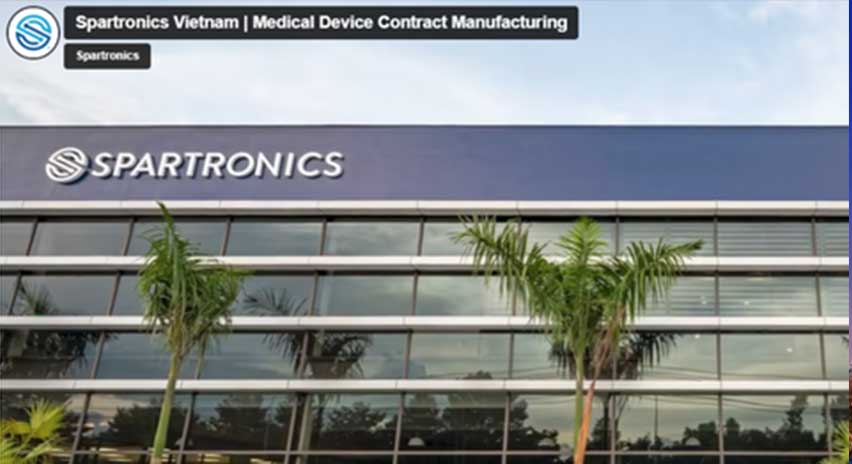FAQ: What Is ANSI/ESD S20.20 and Why Does It Matter for Medical Device Manufacturing?
If you work in medical device manufacturing, you know how important it is to control factors like dust, impact, wear, and electrical safety. One area that often goes unnoticed is electrostatic discharge (ESD), a small spark that can cause big problems for sensitive electronics. To address this, Spartronics maintains full compliance with the ANSI/ESD S20.20 standard, which outlines best practices for managing and minimizing ESD risks. By following these strict guidelines, we help protect critical components, reduce costly failures, and support overall product reliability and regulatory readiness.
Here are common questions about ANSI/ESD S20.20, particularly in medical device contexts, along with clear answers based on best practices and our experience at Spartronics.
What is ANSI/ESD S20.20?
It is a U.S. standard (from the Electrostatic Discharge Association) that defines how to set up, maintain, and verify a control program to protect electronic parts, assemblies, and equipment from electrostatic discharge.
Why is ANSI/ESD S20.20 critical in medical device manufacturing?
Many medical devices have components that are highly sensitive to static (microchips, sensors, circuit boards). An unnoticed static event can degrade performance or cause latent failures. ANSI/ESD S20.20 helps prevent those risks, improves product lifespan, and supports regulatory compliance.
What are the core requirements of ANSI/ESD S20.20?
- Establish an ESD control program plan with clear roles, documented procedures, and regular audits to ensure effective control.
- Create ESD Protected Areas (EPAs) where surfaces, tools, and personnel are grounded or bonded to prevent electrostatic discharge (ESD) hazards.
- Use static-safe packaging, follow correct handling procedures, and control the use of insulators and isolated conductors.
- Perform compliance verification by conducting regular tests for wrist straps, flooring, ionization, ground resistance, surface resistance, and other relevant parameters.
What does compliance look like at a medical device contract manufacturer like Spartronics?
At Spartronics, compliance means more than having the standard on the shelf. We operate FDA-registered facilities for the manufacture of Class II and III medical devices. We hold certifications such as ISO 13485:2016 and ISO 9001:2015, among others. We also build in-process test strategies, utilize traceability, document every stage, and enforce strict quality systems for in-circuit testing, AOI, environmental stress screening, and other processes.
How does following ANSI/ESD S20.20 save costs and improve safety?
At Spartronics, failure isn’t an option; our products are mission-critical and often life-sustaining, so reliability has to be built in from the start. Catching potential ESD issues early prevents costly failures later in the process. Proactive ESD management helps eliminate rework, scrap, and warranty returns while protecting the integrity of every device we build. Maintaining ANSI/ESD S20.20 compliance also supports smoother regulatory inspections and ensures our customers receive products they can trust when performance matters.
What are the consequences of ignoring ESD control in medical device production?
- Parts can be damaged without visible signs, which can lead to failures later.
- Device reliability drops; costs skyrocket due to repairs or field failures.
- Regulatory risks: Non-compliance can lead to audit failures or customer rejection
- Reputation suffers. For devices that patients rely on, that’s not just business, it’s lives.
How does ANSI/ESD S20.20 get implemented?
- Begin with risk assessment: identify where static-sensitive parts are handled
- Write documented ESD control plan covering EPAs, grounding systems, packaging, inspection, audits, and training
- Train all personnel on the proper use of grounding tools, storage, and transportation of parts, and the importance of static control.
- Monitor and verify regularly. Ensure that wrist straps, floors, work surfaces, and ionization systems are tested.
- Tailor the program to match your facility, but without weakening the required protections.
At Spartronics, precision and reliability are non-negotiable. Our products support mission-critical and life-sustaining applications, where even the smallest defect can have major consequences. That’s why adherence to ANSI/ESD S20.20 is built into our process, not treated as an afterthought.
This standard helps us safeguard sensitive electronics, maintain consistent product performance, and meet the highest regulatory expectations. Every detail matters, and our commitment to ESD control ensures the technology we build performs flawlessly when it matters most.
If you’re seeking a manufacturing partner committed to the highest standards of quality and reliability, Spartronics is ready to help. We deliver precision, consistency, and safety in every product we build. Let’s connect to discuss how we can support your next program with the dependability you can count on.






